Painting on Canvas: A Starter Guide
Welcome to the world of canvas painting, where your imagination can run wild and your creativity knows no bounds! This guide provides an overview of painting on canvas for beginners, covering essential techniques, materials, and tips to help you start your artistic journey with confidence. Whether you’re a complete novice or someone looking to brush up on your skills, this guide will equip you with all the knowledge you need to create stunning works of art. So, grab your brushes, and let’s dive into the vibrant universe of canvas painting!
Selecting the appropriate canvas is crucial for your artwork. It’s like choosing the right stage for a performance; the canvas is where your artistic expression comes to life! There are various types of canvases to consider, including:
- Pre-stretched Canvases: These come ready to use and are perfect for beginners who want to jump right into painting.
- Canvas Boards: A more affordable option, these boards are sturdy and easy to transport.
- Custom Canvases: For those who want something specific, custom canvases can be made to fit your desired dimensions.
When choosing a canvas, think about the size and texture that will best suit your style. A larger canvas can be intimidating but offers a grand space for creativity, while a smaller canvas is manageable and great for practice. Remember, the right canvas can make all the difference in your painting experience!
Understanding the necessary tools and materials is key to successful painting. You wouldn’t go into battle without your armor, right? Similarly, having the right supplies will set you up for success. Here’s a basic list of essential supplies you’ll need:
- Brushes: Different shapes and sizes will allow you to create various effects.
- Paints: Choose between oil, acrylic, or watercolor based on your preference and style.
- Palettes: A palette is essential for mixing colors and experimenting with shades.
- Mediums: These can alter the texture and drying time of your paints.
Having these tools at your disposal will empower you to explore and experiment with your canvas paintings. Don’t hesitate to invest in quality supplies; they can make your painting experience more enjoyable and productive!
Different types of paints can yield unique results, much like different musical instruments create distinct sounds. Here’s a quick overview of the three main types of paints:
Oil paints offer rich colors and a slow drying time, allowing for blending and layering. They provide a depth of color that can be hard to achieve with other mediums. However, their slow drying time can be a double-edged sword; while it allows for more manipulation of the paint, it also means you’ll need to plan your work sessions accordingly. For beginners, it’s essential to learn about proper ventilation and cleaning techniques when using oil paints.
Acrylic paints are versatile and quick-drying, making them a popular choice for beginners. They can mimic the look of oil paints when mixed with certain mediums but dry much faster, allowing for quicker layering. Acrylics are also water-soluble, making cleanup a breeze! Just remember, once they dry, they’re permanent, so work fast!
Choosing the right brushes and techniques can significantly impact your painting. Brushes come in various shapes and sizes, each serving a unique purpose. For instance:
- Flat Brushes: Great for broad strokes and filling in large areas.
- Round Brushes: Ideal for detailed work and fine lines.
- Fan Brushes: Perfect for creating texture and foliage effects.
Experimenting with different brush techniques will help you discover your unique style. Don’t be afraid to play around—after all, painting is about expressing yourself!
Learning fundamental painting techniques is essential for beginners. Just like a musician practices scales, artists must master techniques to create beautiful works. Here are a few techniques to get you started:
Blending is a crucial technique that creates smooth transitions between colors. To achieve effective blending on your canvas, try using a wet-on-wet technique where you apply wet paint onto wet paint. This allows the colors to merge seamlessly, creating a soft, dreamy effect. Practice makes perfect, so don’t hesitate to experiment with different color combinations!
Layering allows for depth and complexity in your artwork. Think of it like building a sandwich; each layer adds something unique and delicious! Start with a base layer and gradually add more layers, allowing each to dry before applying the next. This technique can create stunning visual effects and enhance the overall richness of your painting.
Inspiration can come from various sources. It’s all around you, waiting to be discovered! Here are a few tips on how to find creative ideas for your canvas paintings:
Nature is a rich source of inspiration for artists. From the vibrant colors of a sunset to the intricate details of a flower, the natural world can ignite your creativity. Take a walk outside, and let the beauty of your surroundings fuel your artistic vision!
Exploring different art movements can spark creativity. Studying various styles, from Impressionism to Abstract, can influence your approach to painting on canvas. Don’t be afraid to borrow techniques or ideas from other artists—after all, art is a conversation that spans generations!
Q: What type of paint is best for beginners?
A: Acrylic paints are often recommended for beginners due to their versatility and easy cleanup.
Q: How do I choose the right canvas size?
A: Consider your comfort level and the space where you’ll be painting. Start small if you're unsure!
Q: Can I use regular brushes for painting on canvas?
A: While you can use regular brushes, investing in brushes specifically designed for painting will yield better results.

Choosing the Right Canvas
When it comes to painting, the canvas you choose can make a significant difference in your artwork. Think of it as the foundation of a house; without a solid base, everything else can crumble. There are several types of canvases available, each with its own characteristics and advantages. The most common options include pre-stretched canvases, canvas boards, and custom canvases. Understanding these options will help you select the best canvas for your artistic journey.
Pre-stretched canvases are ready to use right out of the box. They come pre-stretched over a wooden frame, which provides a taut surface for painting. This option is perfect for beginners who want to dive straight into their artwork without the hassle of preparing their canvas. They are available in various sizes and textures, allowing for flexibility in your creative expression.
On the other hand, canvas boards are a more affordable option. These are made of a thin board covered with canvas, making them lightweight and easy to transport. They are ideal for practicing techniques or creating smaller works. However, they may not have the same durability as pre-stretched canvases, so keep that in mind if you're planning to create a masterpiece.
If you're feeling adventurous, you might consider custom canvases. These allow you to choose specific dimensions and can be tailored to your preferences. Whether you want a large piece for a statement wall or a unique shape for an unconventional artwork, custom canvases can be a great choice. Just remember, creating your own canvas involves a bit more work, but the satisfaction of painting on a canvas made just for you can be incredibly rewarding.
Now, let's not forget about the texture of the canvas. The surface can significantly affect how your paint interacts with it. Here are a few textures you might encounter:
- Fine texture: Ideal for detailed work and smooth applications.
- Medium texture: A versatile option that works well for most painting techniques.
- Rough texture: Great for impasto techniques and adding depth to your artwork.
Ultimately, the choice of canvas comes down to your personal style and the techniques you wish to explore. It’s essential to experiment with different types to see which one resonates with you the most. So, whether you opt for a pre-stretched canvas, a canvas board, or a custom creation, remember that the canvas is just the beginning of your artistic adventure.
1. What type of canvas is best for beginners?
For beginners, pre-stretched canvases are often recommended due to their convenience and ease of use. They allow you to start painting right away without any prep work.
2. Can I use acrylic paints on any type of canvas?
Yes, acrylic paints are versatile and can be used on most types of canvas, including pre-stretched and canvas boards. Just ensure that the canvas is primed if you're using oil paints.
3. How do I prepare a custom canvas?
To prepare a custom canvas, you will need to stretch the canvas over a frame and secure it. Make sure to apply a primer to ensure the paint adheres well.

Essential Painting Supplies
When you embark on your canvas painting journey, having the right supplies is absolutely essential. Think of it as gathering your tools before starting a grand adventure; without them, you might find yourself lost or unable to express your creativity fully. So, what exactly do you need to get started? Let's dive into the essential painting supplies that will set you up for success!
First and foremost, you'll need a selection of brushes. Brushes come in various shapes and sizes, each designed for specific techniques and effects. For instance, flat brushes are ideal for broad strokes and filling in large areas, while round brushes are perfect for detail work and fine lines. A good starter set typically includes:
- Flat brushes (various sizes)
- Round brushes (small, medium, and large)
- Fan brushes for texture
Next on the list is paint. The type of paint you choose can greatly influence your artistic expression. As we mentioned earlier, oil, acrylic, and watercolor paints each have their unique characteristics. For beginners, acrylic paints are often recommended due to their versatility and quick drying times. They can be used on various surfaces, including canvas, and are easy to clean up with water. If you're feeling adventurous, you might also want to explore oil paints, which offer rich colors and a longer drying time, allowing for more blending and layering.
Don't forget about your palette! A palette is where you'll mix your colors and create new shades. You can use a traditional wooden palette, a disposable paper palette, or even a glass one. The choice is yours, but ensure it's large enough to accommodate your mixing needs.
Another crucial supply is your canvas. You can choose from pre-stretched canvases, canvas boards, or even create your own custom canvas. Pre-stretched canvases are convenient and ready to use, while canvas boards are perfect for practice and smaller works. If you're feeling particularly creative, you might enjoy stretching your own canvas, which allows for a personalized touch.
In addition to these essentials, you'll want to consider using mediums to enhance your painting experience. Mediums can alter the texture and drying time of your paint, allowing you to achieve various effects. For example, a glazing medium can help you create transparent layers, while a gel medium can add texture to your work.
Lastly, don't overlook the importance of cleaning supplies. Keeping your brushes and tools clean is vital for maintaining their quality and ensuring your artwork looks its best. Invest in some brush soap or gentle cleaning solution, along with plenty of paper towels or rags for easy cleanup.
Here's a quick summary of the essential painting supplies you'll need:
| Supply | Description |
|---|---|
| Brushes | Different shapes and sizes for various techniques. |
| Paint | Acrylic, oil, or watercolor paints for your canvas. |
| Palette | For mixing colors and creating new shades. |
| Canvas | Pre-stretched, boards, or custom options. |
| Mediums | Enhancers for texture and drying time. |
| Cleaning Supplies | Brush soap and paper towels for maintenance. |
With these essential supplies in hand, you're well on your way to creating stunning works of art on canvas. Remember, the journey of painting is as important as the final piece, so enjoy every moment!
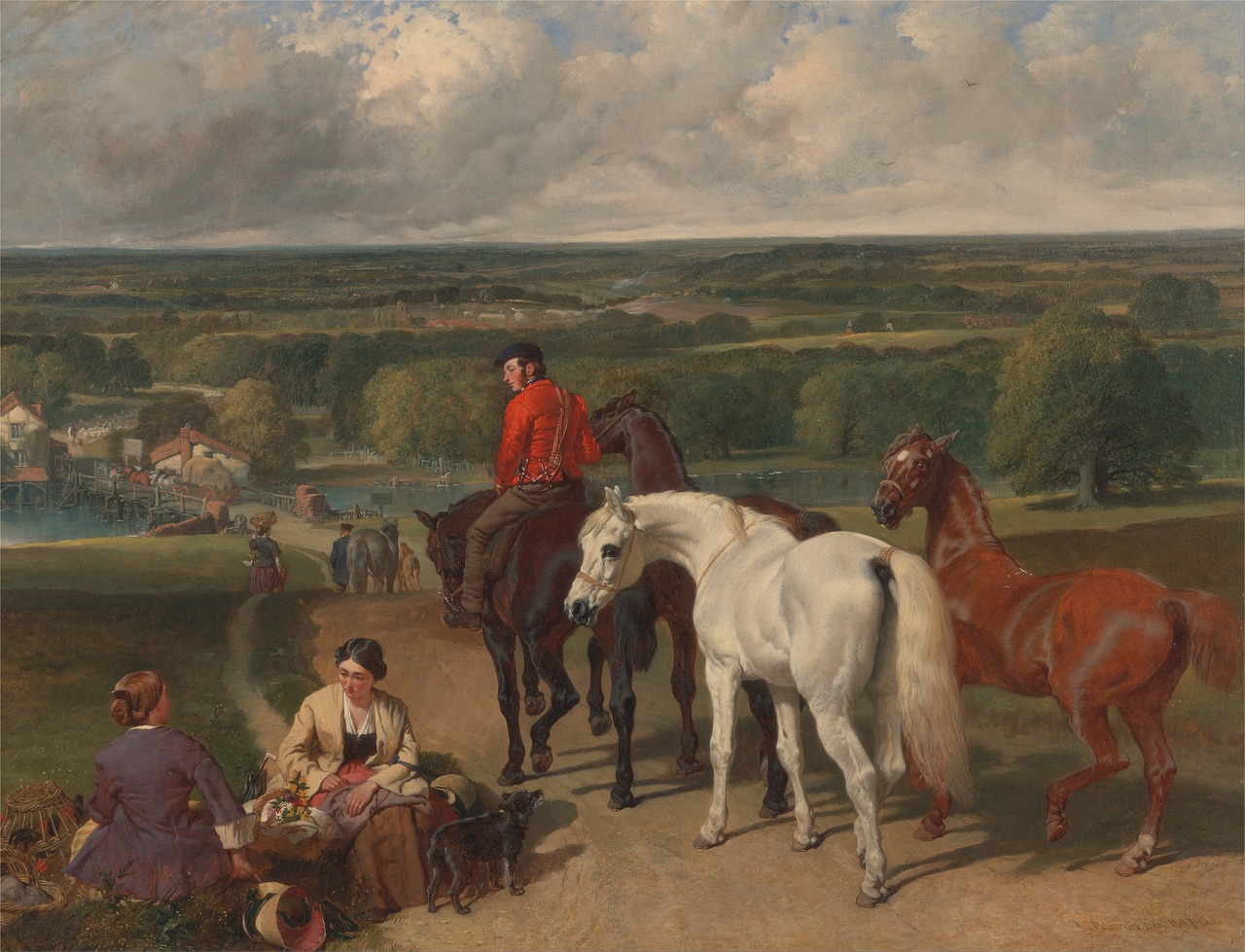
Types of Paints
When it comes to painting on canvas, the type of paint you choose can dramatically affect the outcome of your artwork. Each paint type has its unique characteristics, advantages, and challenges, making it essential to understand the differences before diving into your creative journey. Let's explore the three primary types of paints that artists commonly use: oil paints, acrylic paints, and watercolor paints.
Oil paints are known for their rich, vibrant colors and the ability to create stunning depth in your artwork. They have a slow drying time, which allows artists to blend colors and create intricate layers without the pressure of drying too quickly. However, this can also be a double-edged sword for beginners, as the slow drying process means that it can take time to complete a piece. Additionally, oil paints require the use of solvents for cleaning brushes and thinning the paint, which can be daunting for those new to the medium. But fear not! The depth and luminosity that oil paints can bring to your canvas can be truly breathtaking.
Acrylic paints, on the other hand, are often favored by beginners due to their versatility and quick-drying properties. They can be diluted with water, allowing for a wide range of techniques, from watercolor-like washes to thick impasto applications. This means you can experiment with various styles without the long waiting periods associated with oil paints. Acrylics are also less toxic and easier to clean up, making them a more approachable medium for those just starting out. However, the quick drying time can pose challenges, as you need to work efficiently to blend colors before they set on the canvas.
Lastly, we have watercolor paints, which are typically used on paper but can also be applied to specially prepared canvases. Watercolors are known for their transparency and fluidity, allowing for delicate washes and subtle color transitions. However, they can be tricky to master, as the paint can lift easily if too much water is applied or if the canvas isn’t prepared correctly. Watercolors offer a unique way to express creativity, but they may not be the best choice for beginners looking for more control in their painting process.
To help you choose the right paint for your canvas projects, here's a quick comparison of the three types:
| Type of Paint | Drying Time | Best For | Cleanup |
|---|---|---|---|
| Oil Paints | Slow | Rich, layered artwork | Solvents required |
| Acrylic Paints | Fast | Versatile techniques | Soap and water |
| Watercolor Paints | Varies | Delicate washes | Water |
In conclusion, each type of paint brings something unique to the table. Whether you’re drawn to the vibrant depth of oil paints, the flexibility of acrylics, or the soft washes of watercolors, understanding these differences will help you make an informed choice. As you embark on your painting journey, consider experimenting with each type to discover which one resonates with your artistic style and preferences the most. Remember, the paint is just a tool; it's your creativity that will truly bring your canvas to life!
- Can I mix different types of paint on the same canvas? Mixing different types of paint can be tricky. Generally, it's best to stick with one type of paint for a single piece to avoid issues with adhesion and drying times.
- Which paint is easiest for beginners? Acrylic paints are often recommended for beginners due to their ease of use, quick drying time, and versatility.
- How do I choose the right brushes for my paint type? Each type of paint works best with specific brush types. For example, oil paints work well with stiff bristle brushes, while acrylics can be used with softer synthetic brushes.
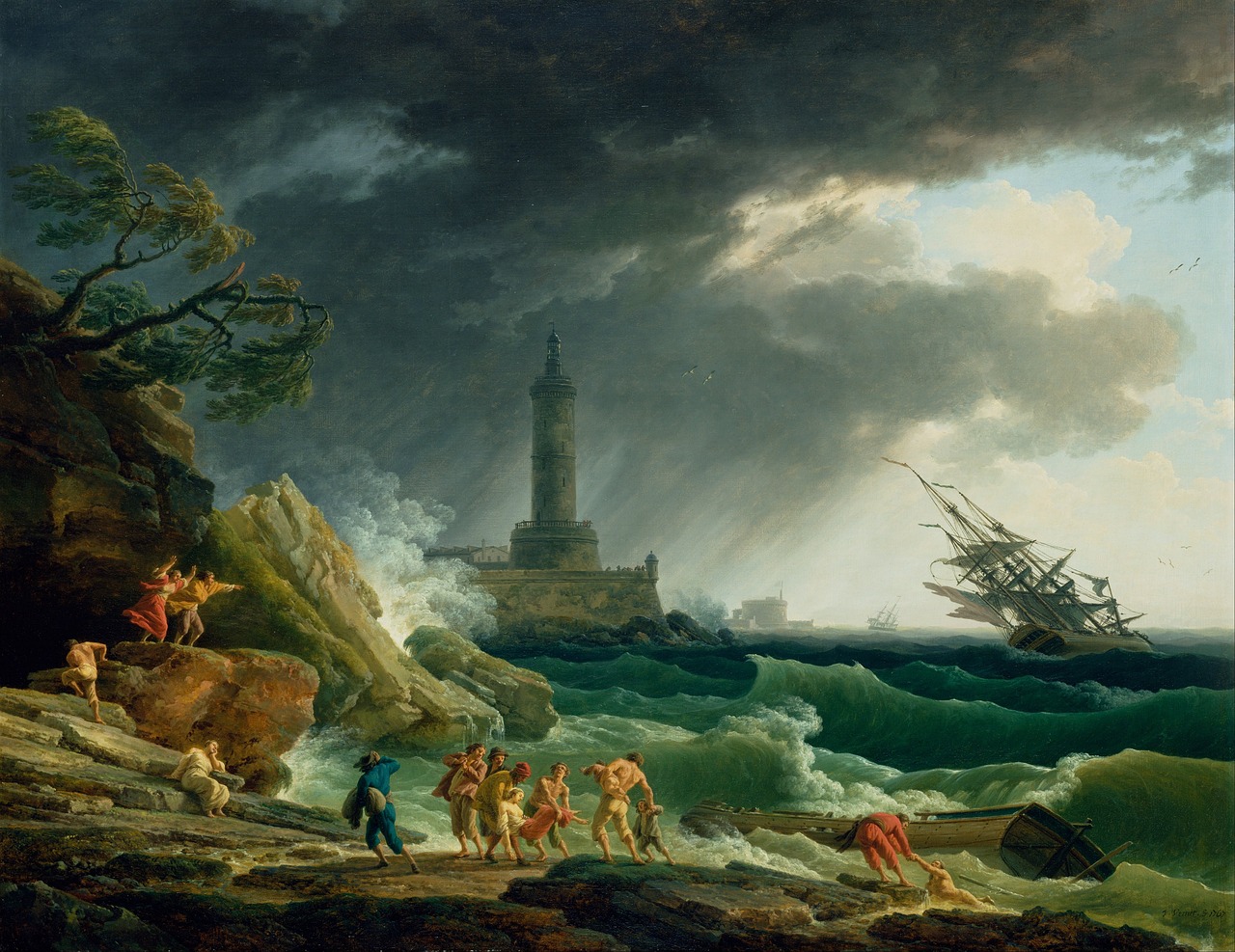
Oil Paints
When it comes to painting on canvas, are often regarded as a classic choice among artists, both seasoned and novice. Their rich, vibrant colors and unique texture can truly bring a canvas to life. But what makes oil paints so special, and how can you make the most of them on your artistic journey? Let's dive in!
One of the standout features of oil paints is their slow drying time. This characteristic allows artists to work at a leisurely pace, blending colors and layering them without the pressure of immediate drying. Imagine you’re sculpting a masterpiece from clay; oil paints provide that same kind of flexibility, letting you mold your artwork over time. However, this advantage can also pose a challenge for beginners, as it requires a bit of patience and understanding of how to manage drying times effectively.
Another significant benefit of oil paints is their depth of color. The pigments used in oil paints are often more saturated than those in other types of paint, leading to stunning visual effects. This means that when you apply oil paint on canvas, you can achieve a luminosity that is hard to replicate with other mediums. However, this beauty comes with its own set of challenges. Oil paints can be more difficult to clean up, requiring solvents like turpentine or mineral spirits, which can be intimidating for those just starting out.
For beginners, it’s essential to understand the basic techniques involved in using oil paints. Here are some tips to help you get started:
- Start with a limited palette: Fewer colors can help you learn how to mix effectively.
- Work in layers: Begin with an underpainting to establish your composition, then build up layers gradually.
- Experiment with mediums: Adding linseed oil or other mediums can alter the texture and drying time of your paint.
As you become more comfortable with oil paints, you might also explore different techniques such as glazing or impasto. Glazing involves applying thin layers of transparent paint to create depth, while impasto allows you to apply paint thickly to create texture. Both techniques can add incredible dimension to your work, making your canvas pieces truly stand out.
In conclusion, while oil paints can be a bit daunting at first, their rich colors and versatility make them a fantastic choice for anyone looking to express their creativity on canvas. With practice and experimentation, you’ll find that oil paints can open up a world of possibilities for your artistic endeavors.
Here are some common questions about oil paints that might help you on your journey:
- How do I clean my brushes after using oil paints? Use a solvent like turpentine or mineral spirits to clean your brushes thoroughly, followed by soap and water.
- Can I use oil paints on any canvas? Yes, but make sure the canvas is primed properly to prevent the oil from damaging the fibers.
- What is the best way to store my oil paintings? Store them in a cool, dry place, and avoid stacking them directly on top of each other to prevent damage.
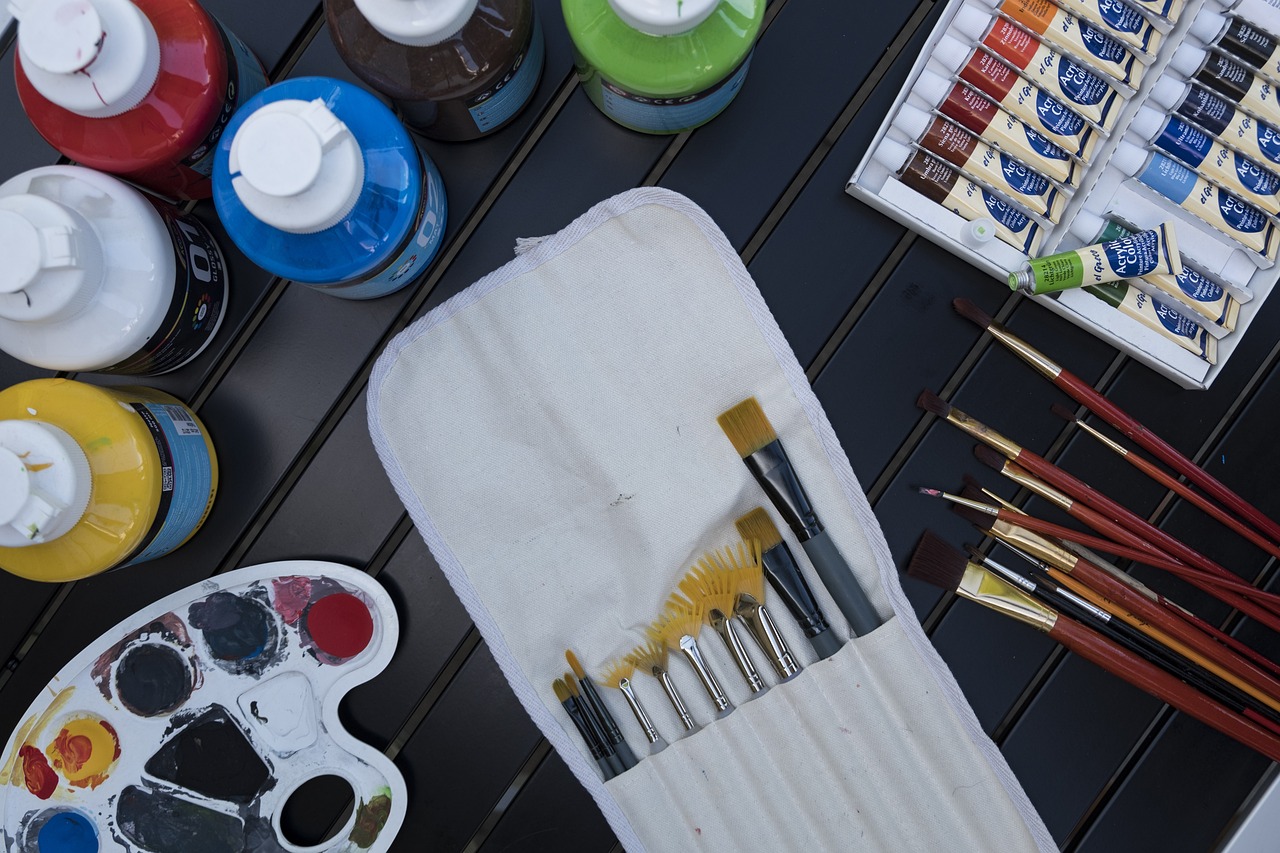
Acrylic Paints
Acrylic paints are a fantastic choice for beginners and seasoned artists alike, thanks to their versatility and quick-drying properties. Unlike oil paints, which can take days or even weeks to dry, acrylics dry within minutes, allowing you to build layers and make adjustments without waiting around. This means you can work on your masterpiece in a single session or come back to it later without worrying about smudging or damaging wet paint.
One of the most appealing aspects of acrylic paints is their wide range of colors and finishes. You can find acrylics in everything from vibrant hues to soft pastels, and they can be mixed easily to create custom shades. Plus, they come in different finishes, such as matte, glossy, and satin, giving you the flexibility to achieve the exact look you want for your canvas.
When it comes to application, acrylics can mimic the properties of both oil and watercolor paints. You can use them thickly for an impasto effect or dilute them with water for a more transparent wash. This adaptability means you can experiment with various techniques, such as dry brushing, splattering, or even pouring, to discover what resonates with your artistic style.
Another significant advantage of acrylic paints is their ease of cleaning. Unlike oil paints that require solvents for cleanup, you can wash acrylics off your brushes and palettes with just soap and water. This makes them not only user-friendly but also a practical choice for artists who want to maintain a tidy workspace.
However, it's essential to note that acrylics can dry quickly on your palette as well, which might be a bit daunting for beginners. To combat this, consider using a palette with a lid or a stay-wet palette that keeps your paints moist longer. Additionally, there are mediums available that can extend the drying time, allowing for more blending and manipulation of the paint.
In summary, acrylic paints offer a plethora of benefits that make them an ideal medium for artists just starting their journey. With their quick drying time, vibrant colors, and ease of use, they provide a perfect platform to explore your creativity. So grab your brushes, squeeze out some paint, and let your imagination run wild!
- Can I use acrylic paints on other surfaces besides canvas? Yes, acrylic paints can be used on a variety of surfaces including paper, wood, and even fabric.
- Are acrylic paints safe for children? Most acrylic paints are non-toxic, but it's always best to check the label for safety information.
- How can I extend the drying time of acrylic paints? You can use acrylic retarders or stay-wet palettes to help keep your paints workable for longer periods.
- Can I mix acrylic paints with other mediums? Absolutely! Acrylics can be mixed with various mediums to alter their texture and finish.

Brush Types and Techniques
Choosing the right brushes is akin to a chef selecting the perfect knife; it can make or break your artistic creation. Brushes come in various shapes, sizes, and materials, each designed to achieve different effects on your canvas. For beginners, understanding these differences is crucial to enhancing your painting skills and achieving the results you envision. Let's dive into the world of brushes!
First off, there are several types of brushes you should consider:
- Round Brushes: These brushes have a pointed tip and are perfect for detailed work, such as fine lines and intricate designs. They can also be used for washes and broad strokes, making them quite versatile.
- Flat Brushes: With a square edge, flat brushes are ideal for bold, sweeping strokes and filling in larger areas. They can create sharp lines and are excellent for painting backgrounds.
- Filbert Brushes: A hybrid of round and flat brushes, filbert brushes have an oval shape that allows for both detail and broader strokes. They are great for blending and creating soft edges.
- Fan Brushes: As the name suggests, these brushes have bristles that spread out like a fan. They are fantastic for texture, such as foliage or hair, and can add unique effects to your artwork.
- Detail Brushes: These are tiny brushes designed for precision work. If you want to add intricate details to your painting, a detail brush is your best friend!
Now that you know the types of brushes, let's talk about how to use them effectively. Technique plays a significant role in how your paint interacts with the canvas. For instance, using a round brush with a light touch can create delicate lines, while applying more pressure can yield thicker strokes. Experimenting with different angles and pressures will help you discover the unique characteristics of each brush.
Another essential technique is loading the brush. This involves dipping your brush into paint and ensuring it's adequately saturated without overloading it. Too much paint can lead to drips and an uneven application, while too little can result in a streaky finish. When you're just starting, practice loading your brush until you find the right balance that works for you.
Moreover, brush care is vital for maintaining the quality of your tools. Always clean your brushes after each painting session using soap and water or a specialized brush cleaner. This not only prolongs the life of your brushes but also ensures that colors don’t mix unintentionally in your next project.
In conclusion, understanding the various brush types and mastering different techniques will significantly enhance your canvas painting experience. Just like a musician learns to play their instrument, you too will find that practice leads to improvement. So, grab your brushes, experiment with techniques, and let your creativity flow!
Q: How do I choose the right brush for my painting style?
A: It depends on the effect you want to achieve. For detailed work, opt for round or detail brushes. For broader strokes, flat or filbert brushes are ideal. Experiment to find what works best for you!
Q: How often should I clean my brushes?
A: Clean your brushes after every painting session to prevent paint from drying and damaging the bristles. Regular cleaning will keep your brushes in good shape for longer.
Q: Can I use the same brush for different types of paint?
A: Yes, but it's best to clean your brushes thoroughly between different types of paint (e.g., oil and acrylic) to avoid unwanted mixing of colors and mediums.

Basic Painting Techniques
When it comes to painting on canvas, mastering basic techniques is essential for every aspiring artist. These techniques not only enhance your skills but also allow you to express your creativity in more profound ways. Think of painting as a dance; you need to know the steps before you can improvise and create your own unique rhythm. In this section, we’ll explore some fundamental techniques that will be your stepping stones into the vibrant world of canvas painting.
One of the first techniques to grasp is blending colors. Blending is crucial for creating smooth transitions between colors, which is particularly important when working on landscapes or portraits. Imagine you’re painting a sunset; you wouldn’t want harsh lines between the oranges, pinks, and purples. Instead, you want a seamless flow that mimics the beauty of nature. To achieve effective blending, use a soft brush and apply a small amount of water or medium to your paint. This will help you create those beautiful gradients that make your artwork come alive.
Next up is the technique of layering. Layering is like building a cake; each layer adds depth and complexity to your artwork. By applying multiple layers of paint, you can create textures and intricate details that draw the viewer in. Start with a base layer, allowing it to dry before adding subsequent layers. This technique is particularly effective with acrylic paints, as they dry quickly and allow you to work efficiently. However, don’t rush; patience is key. Each layer should be applied thoughtfully, allowing the previous one to show through in some areas for a more dynamic effect.
Another technique worth mastering is glazing. Glazing involves applying a transparent layer of paint over a dried layer, which can dramatically alter the appearance of your artwork. It’s like putting a filter over a photo; it can enhance colors and add a sense of luminosity. To create a glaze, mix your paint with a medium to achieve a transparent consistency. This technique works beautifully with both oil and acrylic paints, allowing you to build up rich, vibrant colors without losing the details of your underlying layers.
To summarize, here are the basic painting techniques you should focus on as a beginner:
- Blending: Creating smooth transitions between colors.
- Layering: Building depth and complexity in your artwork.
- Glazing: Applying transparent layers to enhance luminosity.
As you practice these techniques, remember that every artist has their own style and approach. Don’t be afraid to experiment and find what works best for you. Just like learning to ride a bike, it may feel a bit wobbly at first, but with practice, you’ll find your balance and confidence. So grab your brushes, put on some music, and let your creativity flow!
Q: How long does it take to master these techniques?
A: Mastery takes time and practice. Some artists may feel comfortable with these techniques after a few sessions, while others may take longer. The key is to keep practicing and experimenting.
Q: Can I use these techniques with any type of paint?
A: Yes! While some techniques may be more suited to certain types of paint, many of them can be adapted for use with oils, acrylics, or watercolors.
Q: What if I make a mistake while painting?
A: Mistakes are part of the learning process. Embrace them! You can often turn a mistake into a new creative opportunity or simply paint over it.
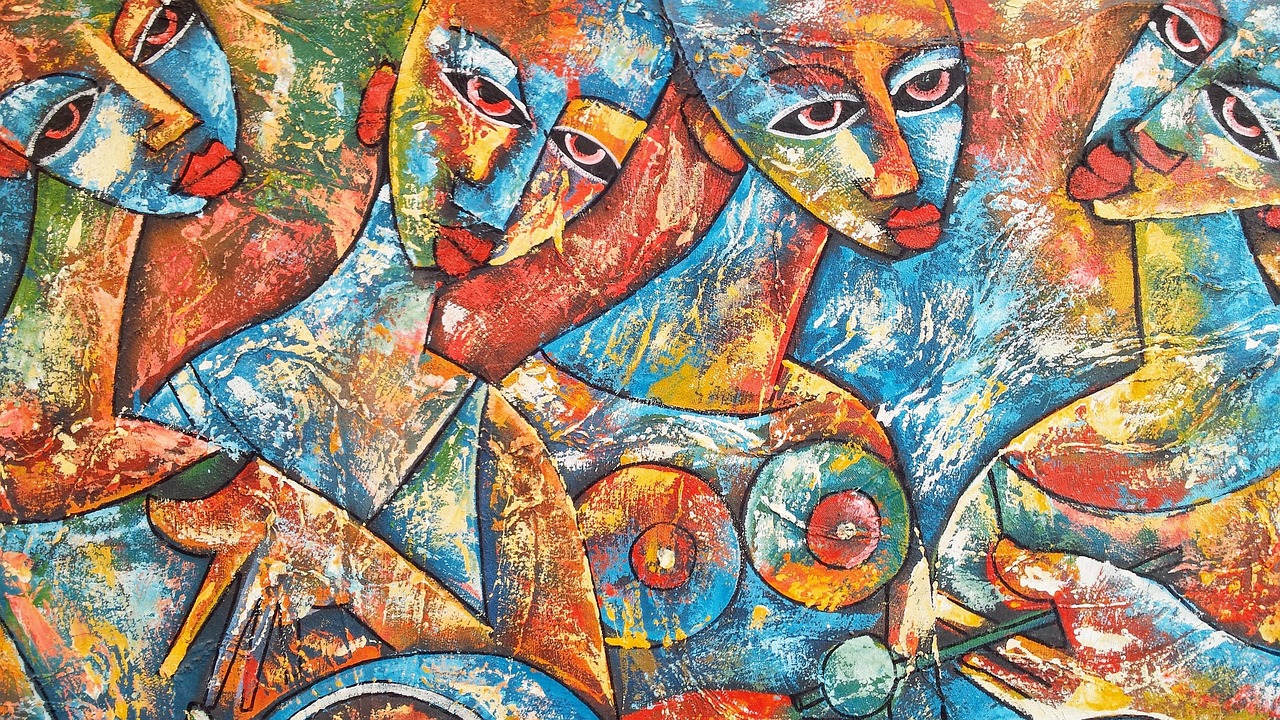
Blending Colors
Blending colors is one of the most essential techniques in painting, especially when it comes to creating smooth transitions and depth in your artwork. Imagine standing in front of a breathtaking sunset, where the vibrant reds, oranges, and yellows seamlessly merge into one another. That’s the magic of blending! As a beginner, mastering this technique can elevate your canvas paintings from ordinary to extraordinary.
To get started with blending, you'll want to choose the right tools. A good set of brushes is critical; look for those with soft bristles, as they allow for smoother application and mixing of colors. Flat brushes are excellent for covering large areas, while round brushes can help you achieve finer details. Additionally, consider using a palette knife for mixing colors directly on your palette, which can give you more control over the shades you create.
When it comes to the actual blending process, there are several techniques you can employ. One popular method is the wet-on-wet technique, where you apply wet paint onto wet paint. This allows the colors to mix directly on the canvas, creating beautiful gradients. Alternatively, the dry brush technique involves using a dry brush to apply paint over a dried layer, which can produce a more textured effect. Experimenting with these methods will help you discover what works best for your artistic style.
Here’s a quick overview of some blending techniques:
| Technique | Description |
|---|---|
| Wet-on-Wet | Applying wet paint on top of wet paint for seamless color transitions. |
| Dry Brush | Using a dry brush on dried paint for a textured finish. |
| Glazing | Applying a thin, transparent layer of paint over a dry layer to alter the color. |
Another tip for effective blending is to work in small sections. Focus on one area at a time, gradually adding and mixing colors until you achieve the desired effect. Don’t be afraid to experiment! Mixing unexpected colors can lead to exciting results that make your artwork unique. And remember, practice makes perfect; the more you blend, the more intuitive it will become.
Lastly, don’t forget to step back and observe your work from a distance. This will give you a better perspective on how well the colors blend together and whether adjustments are needed. Sometimes, what looks great up close may not translate the same way from afar. Trust your instincts and enjoy the process of creating!
- What is the best type of paint for blending? Acrylic paints are often recommended for beginners due to their quick drying time and versatility, but oil paints can also provide beautiful blending effects.
- Can I blend colors on a palette before applying them to the canvas? Absolutely! Mixing colors on your palette can help you visualize the final outcome before applying them to your canvas.
- How do I clean my brushes after blending? Use warm soapy water for acrylics and a solvent like turpentine or linseed oil for oils. Always clean your brushes immediately after use to maintain their shape.
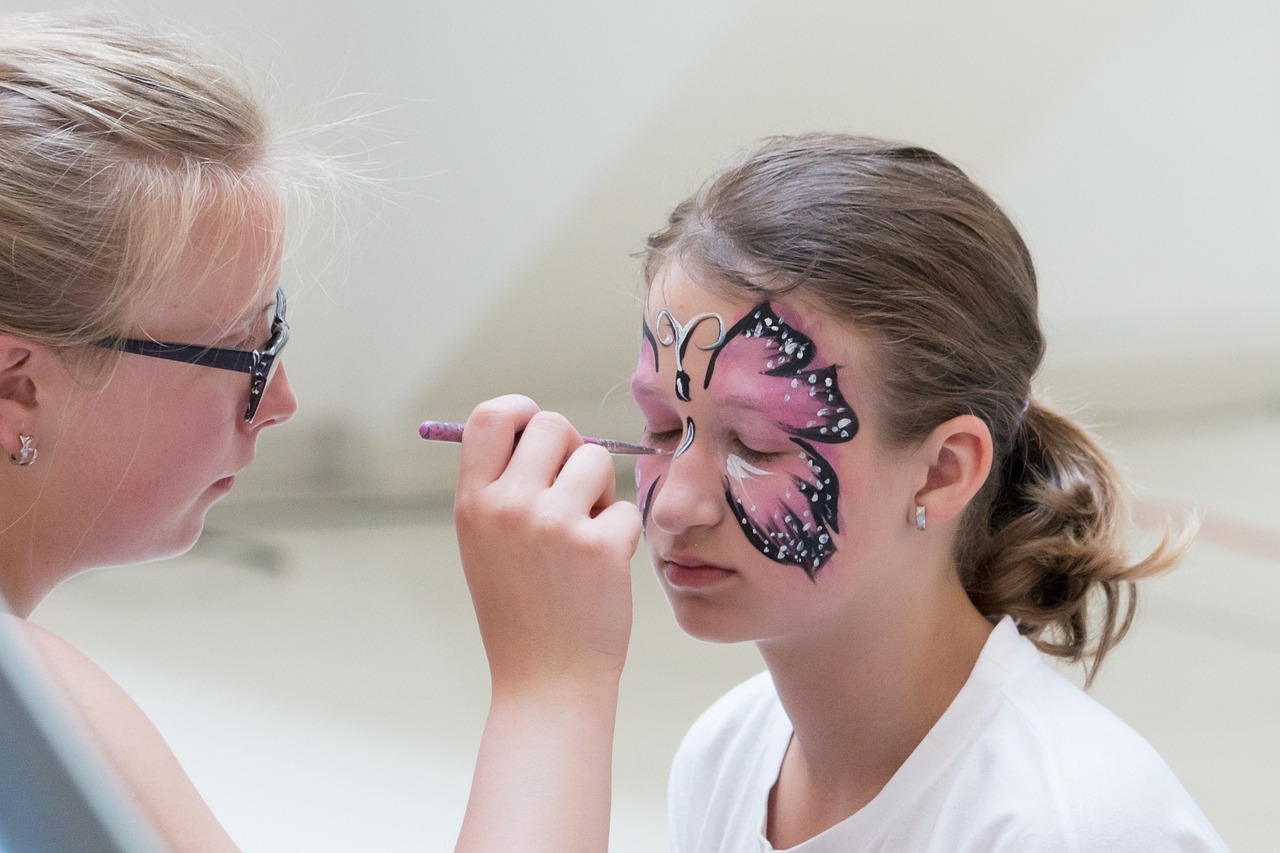
Layering Techniques
Layering is an essential technique in painting that can transform a simple canvas into a masterpiece bursting with depth and complexity. Imagine building a sandwich; each layer adds flavor and texture, making the final product much more satisfying than a single slice of bread. Similarly, in painting, layering allows you to create rich, nuanced surfaces that can evoke various emotions and reactions from viewers. To master layering, it's important to understand not just the application of paint, but also the timing and the types of paint you are using.
When you start layering, the first step is to apply a base layer, which often serves as the foundation of your artwork. This initial layer can be a solid color or a subtle gradient that sets the mood for the piece. Once this layer dries, you can begin adding additional layers, each with its unique color and texture. This is where the magic happens! As you apply subsequent layers, you can manipulate transparency by using glazing techniques, which involve mixing a small amount of paint with a medium to create a translucent effect. This technique allows the colors beneath to show through, creating a beautiful interplay of hues.
Another important aspect of layering is the order in which you apply your colors. Generally, it's advisable to start with darker colors and gradually move to lighter ones. This approach not only helps in achieving depth but also allows you to create highlights that can make your painting pop. However, don’t be afraid to experiment! Sometimes, unexpected combinations can lead to stunning results. Keep in mind that drying time varies between paint types; for instance, oil paints take longer to dry than acrylics, which can influence your layering strategy.
As you become more comfortable with layering, consider incorporating different textures into your work. You can use tools like palette knives or sponges to add dimension and interest to your layers. Additionally, try using various mediums to alter the consistency of your paint, giving you even more control over your layering process. Below is a simple table that outlines the types of paint and their drying times, which can help you plan your layering sessions:
| Type of Paint | Drying Time | Best For Layering |
|---|---|---|
| Oil Paint | Days to weeks | Rich, blended layers |
| Acrylic Paint | Minutes to hours | Quick layering and adjustments |
| Watercolor Paint | Minutes | Light, transparent layers |
Ultimately, layering is about patience and practice. It may take time to develop your own style and technique, but with each stroke, you'll find yourself growing more confident in your abilities. Remember, art is a journey, not a destination. So, don’t rush the process! Enjoy the experience of layering and watch your canvas come to life in ways you never imagined.
- How many layers should I apply? There's no set number; it depends on the effect you want to achieve. Start with a few and build up as you see fit.
- Can I layer different types of paint? Yes, but be cautious. Ensure the base layer is completely dry before applying a different type of paint on top.
- What is the best medium for layering? It varies by paint type. For oil paints, linseed oil is popular, while acrylic painters often use gel mediums.
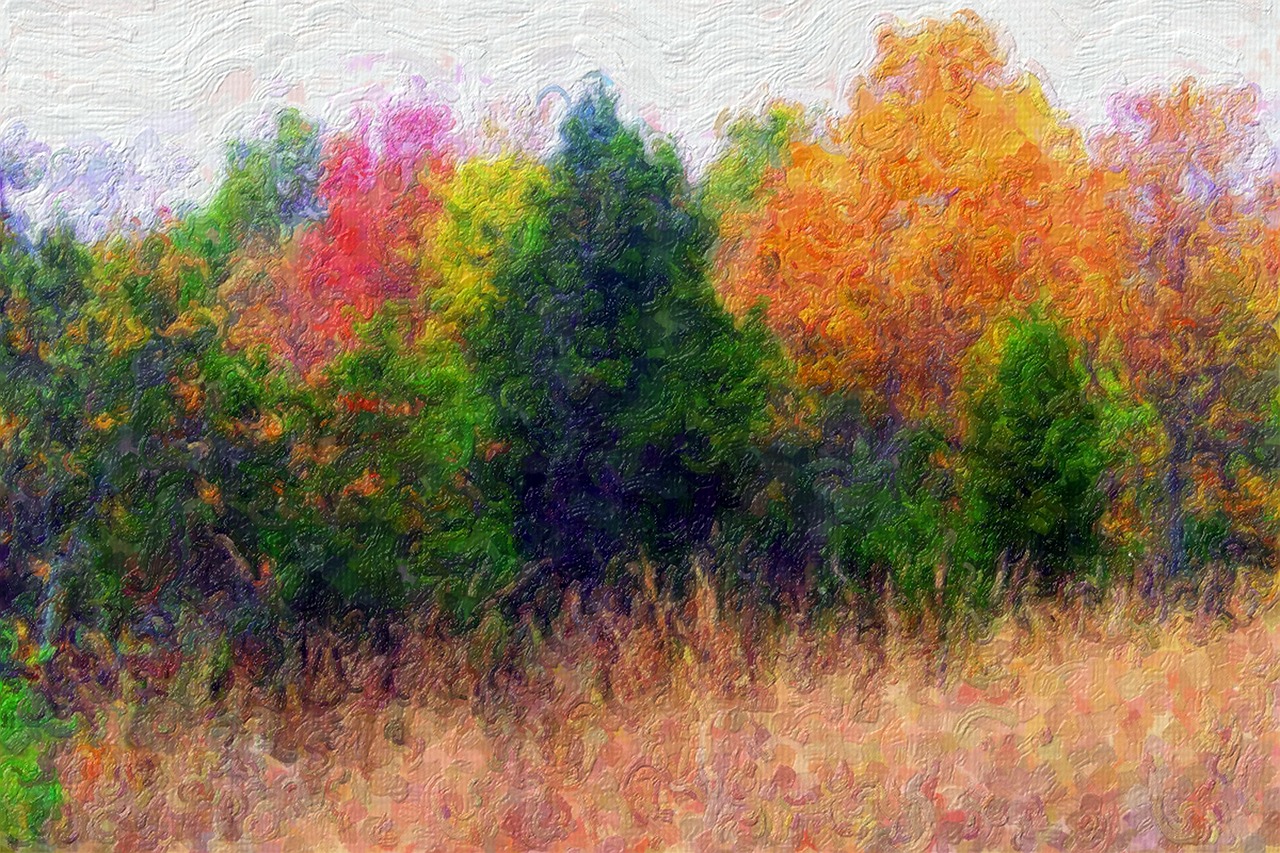
Finding Inspiration
Finding inspiration can sometimes feel like searching for a needle in a haystack, especially when you're staring at a blank canvas. But fear not! Inspiration is all around you, waiting to be discovered. Whether you're an aspiring artist or a seasoned painter, tapping into your creative well is essential for producing captivating artwork. So, where do you begin? In this section, we'll explore various sources of inspiration that can ignite your imagination and help you create stunning canvas paintings.
One of the most abundant sources of inspiration is nature. Imagine stepping outside and breathing in the fresh air, surrounded by vibrant colors and intricate textures. From the gentle sway of trees to the dazzling hues of a sunset, nature offers a spectacular palette of ideas. You might find yourself captivated by the way light dances on water or the delicate patterns of leaves. Taking a walk in a park or hiking through a forest can provide you with fresh perspectives and ideas for your next masterpiece. Consider carrying a sketchbook to jot down ideas or capture scenes that resonate with you.
Another rich vein of inspiration lies in art history. Delving into different art movements can be like opening a treasure chest filled with creative gems. Each era has its unique style, techniques, and philosophies that can influence your work. For instance, you might find the bold colors of the Fauvism movement invigorating, or the delicate brushwork of Impressionism might inspire you to explore light and shadow in your paintings. By studying the works of renowned artists, you can learn about their techniques and even develop your own style by integrating elements from various periods. Why not create a mood board featuring your favorite artists and styles? This can serve as a visual reminder of what excites you about painting.
Additionally, don’t underestimate the power of personal experiences. Your life story, emotions, and memories can be a profound source of inspiration. Think about the moments that have shaped you—joy, sorrow, love, or adventure—and how you can translate those feelings onto your canvas. Perhaps a cherished memory from your childhood or a significant life event could inspire a series of paintings that tell your story. Remember, art is a reflection of who you are, and your unique perspective can resonate with others in ways you might not expect.
Inspiration can also come from everyday life. Look around you—your home, your city, or even your daily commute can spark ideas. The mundane can be transformed into something extraordinary through your artistic lens. Try to see the world as an artist; the way light hits a wall, the shadows cast by objects, or the patterns created by urban landscapes can all serve as a backdrop for your creativity. Keep your camera handy or use your smartphone to capture moments that catch your eye. These snapshots can later be used as references for your paintings.
To wrap it up, finding inspiration is a personal journey that requires you to be open and observant. Whether it’s through nature, art history, personal experiences, or everyday life, the key is to stay curious and embrace the world around you. Don't be afraid to experiment and explore different sources of inspiration. After all, every great artist started with a single spark of creativity, and yours could be just around the corner!
| Question | Answer |
|---|---|
| How can I find inspiration for my paintings? | Inspiration can be found in nature, art history, personal experiences, and everyday life. Stay curious and open to the world around you! |
| What should I do if I feel stuck creatively? | Take a break, explore new environments, or try a different medium to refresh your perspective. Sometimes stepping away can spark new ideas. |
| Can I use photographs as inspiration for my canvas paintings? | Absolutely! Photographs can serve as excellent references for colors, compositions, and subjects. Just ensure to inject your personal style into the artwork. |
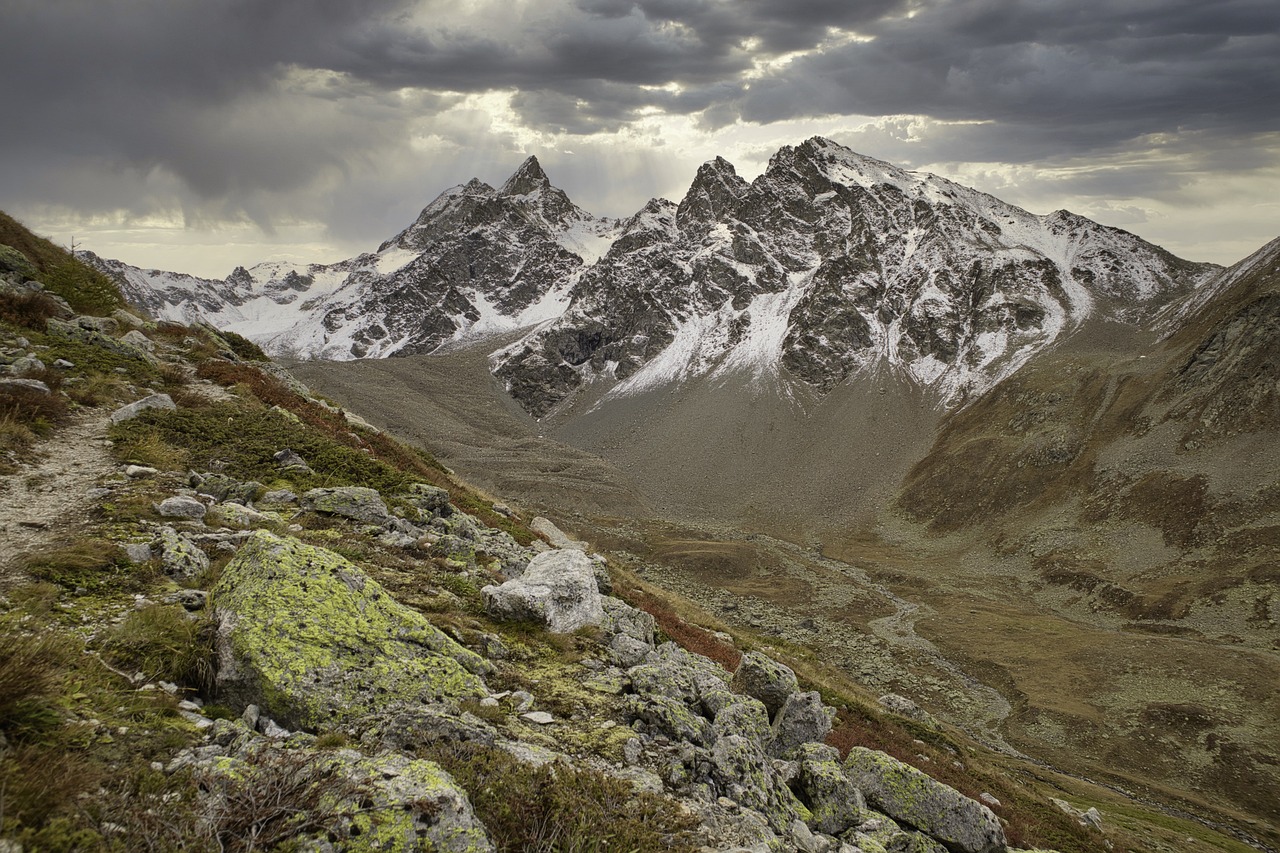
Nature as Inspiration
When it comes to finding inspiration for your canvas paintings, nature is an endless wellspring of creativity just waiting to be tapped. Imagine stepping outside and being enveloped by the vibrant colors, intricate patterns, and soothing sounds of the natural world. From the delicate petals of a flower to the grand expanse of a mountain range, nature offers a diverse palette that can ignite your imagination and fuel your artistic endeavors.
One of the most beautiful aspects of nature is its ever-changing landscape. Each season brings a unique array of colors and textures. In spring, the world bursts into life with bright greens, pastel pinks, and yellows as flowers bloom and trees regain their leaves. Summer showcases a rich tapestry of deep greens and vibrant blues, while autumn dazzles with fiery reds, oranges, and browns. Finally, winter offers a serene palette of whites and grays, perfect for creating a tranquil scene. By observing these changes, you can cultivate a deeper understanding of color theory and how to mix paints to replicate what you see.
To truly harness the beauty of nature in your art, consider incorporating elements such as:
- Landscapes: Mountains, valleys, and oceans can serve as breathtaking backdrops for your paintings.
- Flora: Flowers, trees, and plants can add intricate details and vibrant colors to your canvas.
- Fauna: Animals in their natural habitats can bring life and movement to your artwork.
Additionally, don't forget to engage your senses while exploring the outdoors. Listen to the rustling leaves, feel the texture of tree bark, and inhale the fresh scent of blooming flowers. These sensory experiences can enhance your understanding of your subject matter and translate into more dynamic and engaging artwork. Remember, your canvas is a reflection of your perception of the world around you, so let nature guide your brush.
Finally, if you're feeling stuck or uninspired, try taking a sketchbook outdoors. Sketching directly from nature can help you capture the essence of your surroundings and serve as a reference for your paintings later on. This practice not only hones your observational skills but also deepens your connection with the environment, allowing you to create art that resonates with authenticity and emotion.
Q1: How can I find inspiration in nature if I live in a city?
A1: Even in urban areas, nature can be found in parks, gardens, and along streets. Look for small pockets of greenery, such as flower beds or trees, and observe how they interact with the built environment. You can also visit botanical gardens or nature reserves nearby for a more immersive experience.
Q2: What materials should I bring for outdoor painting?
A2: Bring a portable easel, canvas or sketchbook, a selection of paints (acrylics are great for outdoor work), brushes, and a palette. Don't forget to pack water, snacks, and a comfortable chair or blanket to sit on while you paint!
Q3: How do I capture the changing colors of nature in my artwork?
A3: Take note of the time of day and weather conditions, as these factors greatly influence color perception. Consider painting en plein air (outdoors) to capture the scene in real-time, or take photographs to study the colors later. Mixing colors on your palette to match the hues you see can also help you recreate the beauty of nature.
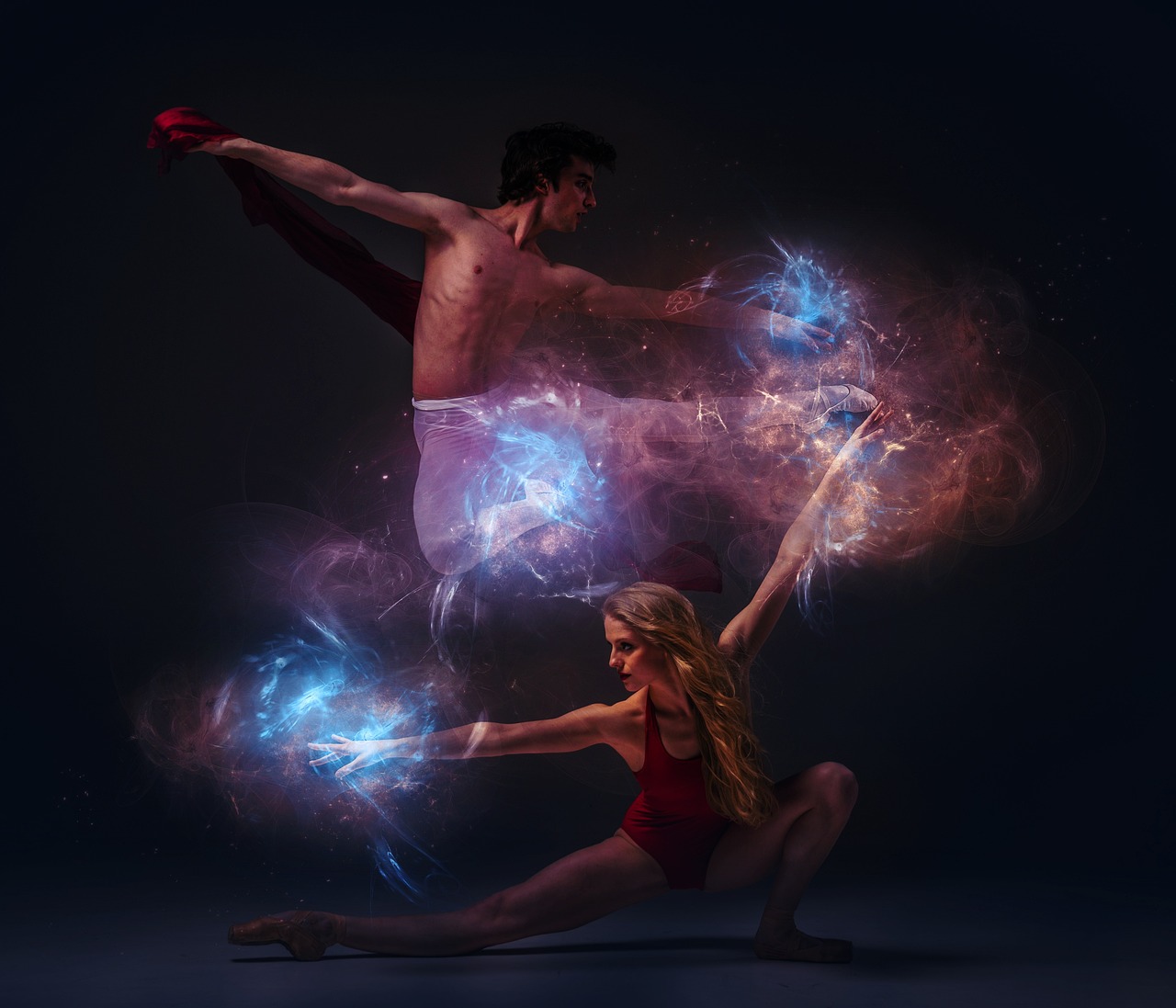
Art History and Styles
When it comes to painting on canvas, understanding art history and its various styles can be a treasure trove of inspiration. Imagine walking through a gallery filled with masterpieces, each telling a unique story and reflecting the emotions of its time. Art history is like a vast ocean, and every wave represents a different movement, style, or technique that has shaped the way we create today. By diving into this rich history, you can uncover techniques, color palettes, and themes that resonate with your own artistic voice.
Exploring different art movements can significantly influence your approach to canvas painting. For instance, the Impressionists focused on capturing light and its ephemeral qualities, using quick brush strokes and vibrant colors. This technique can inspire you to experiment with light in your own works. On the other hand, Surrealism invites you to tap into your subconscious, encouraging dreamlike imagery that can transform your canvas into a world of fantasy. Each art movement offers a distinct perspective, allowing you to incorporate elements into your own style.
Here are some significant art movements and their characteristics that might inspire you:
| Art Movement | Characteristics |
|---|---|
| Renaissance | Focus on realism, human emotion, and classical themes. |
| Baroque | Drama, movement, and vivid contrast of light and shadow. |
| Impressionism | Light effects, everyday subjects, and loose brushwork. |
| Expressionism | Emphasis on emotional experience over physical reality. |
| Surrealism | Dream-like scenes and bizarre imagery. |
As you explore these movements, consider how their philosophies and techniques can be adapted to your own canvas work. For example, if you find yourself drawn to the vibrant colors of the Fauvist movement, try incorporating bold, non-naturalistic colors into your paintings. Or, if the abstract forms of Cubism intrigue you, experiment with breaking down subjects into geometric shapes. The key is to allow these influences to enhance your unique style rather than dictate it.
Additionally, visiting art museums or galleries can be an exhilarating experience. Take your time to observe the brushwork, color choices, and composition of various artworks. Ask yourself questions like, "What emotions does this piece evoke?" or "How did the artist achieve that effect?" These reflections can spark ideas for your own creations and help you develop a deeper appreciation for the art form.
In conclusion, art history is not just a collection of dates and names; it’s a dynamic landscape filled with ideas waiting to be explored. By studying different styles and movements, you can enrich your artistic journey and find inspiration that speaks to you. So, grab your canvas, and let the echoes of the past guide your brush as you create your own masterpiece!
- What is the best way to learn about art history? Visiting museums, reading books, and watching documentaries are great ways to immerse yourself in art history.
- Can I mix styles in my own artwork? Absolutely! Feel free to blend different styles to create something uniquely yours.
- How can I find inspiration for my canvas paintings? Look to nature, art history, and your personal experiences for inspiration.
Frequently Asked Questions
- What type of canvas should I choose as a beginner?
Choosing the right canvas can feel overwhelming, but it doesn't have to be! For beginners, pre-stretched canvases are a great option because they’re ready to use right out of the box. If you prefer something more affordable, canvas boards are also a good choice. Just remember, the canvas type can affect your painting style, so pick one that excites you!
- What essential supplies do I need to start painting on canvas?
To kickstart your painting journey, you'll need a few basic supplies. Grab some brushes (various sizes are best), acrylic or oil paints, a palette for mixing colors, and a canvas of your choice. Don't forget about a cup of water (for acrylics) or a solvent (for oils) and some rags for clean-up. With these tools, you’ll be ready to unleash your creativity!
- Can I use watercolor paints on canvas?
While watercolor paints can be used on canvas, they don’t perform the same way as they do on watercolor paper. Canvas is absorbent and can lead to unexpected results. If you're set on using watercolors, consider using a special watercolor canvas, which is designed to handle the unique properties of water-based paints.
- What painting techniques should I learn first?
As a beginner, mastering a few basic techniques can set you on the right path. Start with blending colors to create smooth transitions, layering to add depth, and glazing for a transparent effect. These techniques will help you build a strong foundation and develop your unique painting style over time.
- Where can I find inspiration for my canvas paintings?
Inspiration is all around you! Nature is a fantastic source—just take a stroll outside and observe the colors and shapes. Additionally, diving into art history can spark ideas; studying different art movements can influence your style. Personal experiences and emotions are also rich wells of inspiration, so don’t hesitate to express what you feel!



















